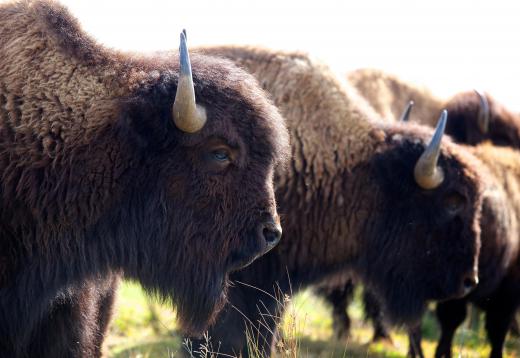What Have We Learned from Prehistoric Cave Paintings?
 Michael Anissimov
Michael Anissimov
Many hundreds of caves, 350 in Spain and France alone, have prehistoric artwork dated to between about 1200 and 34,000 years old. The purpose of these cave paintings is not precisely known. Many attribute religious or spiritual meaning to them, but this is just one theory among many. Other interpretations argue that the cave paintings were ways to pass along information to others, or just art for its own sake. Many cave paintings are located deep in caves, however, making it unlikely that these paintings were for explicit display purposes. Arguments by modern aborigines in Australia suggest that indigenous painting is carried out for a variety of reasons: mainly for for magic against humans or animals or record-keeping.
Cave paintings tend to feature scenes of large wild animals such a aurochs (the extinct ancestors of domesticated cows), bison, horses, and deer. Numerous artistic tracings of human hands have been discovered, as well as artistic line drawings traced with the fingers, called "finger flutings." These enigmatic finger flutings are usually performed on a surface of moonmilk, a white, cheese-like limestone precipitate made up of carbonate minerals in different crystal stages. Moonmilk is only found in caves.

Mostly, cave paintings tell us what we already know -- that there were modern humans in Africa, Europe, and Australia tens of thousands of years ago and these people were sophisticated enough to practice some sort of artwork. This finding is corroborated by the discovery of many non-cave-painting relics such as flint tools, statuettes, and carved animal bones. Cave paintings confirm the existence of animals now either totally extinct -- such as the auroch, or animals extinct in a given range, such as the European Bison (which has been extinct in most of Western Europe since 2000 years ago). The distinctive Lascaux style of cave painting, which is the most famous, died out about 10,000 years ago, when people in present-day France began to adopt an agricultural lifestyle and settle into villages.

Depictions of reindeer in Spanish caves have supported the hypothesis, corroborated by fossil evidence, that reindeer lived in the area around the time of the last major glaciation, which reached in maximum extent 18,000 years ago. At that time, most of the British Isles and northern Europe were covered in continental glaciers, making them uninhabitable. Only southern Europe -- France, Spain, Portugal, Italy, Greece, etc. -- were habitable in the region. In fact, the uninhabitability of much of Europe and Asia probably drove humans expanding from Africa due east, where they colonized Southeast Asia and Australia. Some of the earliest evidence of human colonization outside Africa has been found in Australia, from about 50,000 years ago. It is not known why cave paintings older than 32,000 years have not been found -- perhaps mankind did not reach the necessary level of cultural or artistic development to start producing them until then, or the areas just weren't very populated.
AS FEATURED ON:
AS FEATURED ON:














Discussion Comments
One thing for sure is that they were sufficiently advanced to have the leisure time to undertake the work.
Overall, that points to having a full larder, full tool kits and an abundance of passing game, although it could also mean that one person had enough clout to be the artist and received food, shelter, etc., and safety in return.
Drentel - You're right in that there is much speculation regarding cave paintings, but the fact that they exist tells us so much. Plus, when you add the paintings with fossils found in the regions a story begins to unfold. It is fun to speculate; it's like piecing together a giant puzzle.
Taking part in the debate can be fun, but the bottom line is we don't know why they were painted, and we will never know for certain. If our civilization were to be destroyed and unearthed thousands of years down the line then the people digging through the rubble would have the same questions about us as we have about prehistoric man. I would like to be there to hear them trying to figure out what we had been up to and why.
The Chauvet cave paintings in southern France are remarkable. The number of paintings alone is remarkable considering they were done by prehistoric man. Who would have thought people in that time would have been creating cave paintings. Chauvet's paintings are also impressive because they have remained in good condition, for the most part, over their many many years of existence.
I was also impressed by how painters created different colors and shades. If you did not know otherwise, you would think the work had been done within the last 100 years.
Post your comments